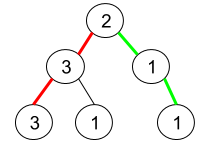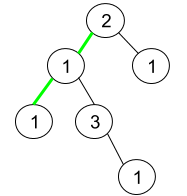1487. Making File Names Unique
Given an array of strings names of size n. You will create n folders in your file system such that, at the ith minute, you will create a folder with the name names[i].
Since two files cannot have the same name, if you enter a folder name which is previously used, the system will have a suffix addition to its name in the form of (k), where, k is the smallest positive integer such that the obtained name remains unique.
Return an array of strings of length n where ans[i] is the actual name the system will assign to the ith folder when you create it.
Example 1:
Input: names = ["pes","fifa","gta","pes(2019)"] Output: ["pes","fifa","gta","pes(2019)"] Explanation: Let's see how the file system creates folder names: "pes" --> not assigned before, remains "pes" "fifa" --> not assigned before, remains "fifa" "gta" --> not assigned before, remains "gta" "pes(2019)" --> not assigned before, remains "pes(2019)"
Example 2:
Input: names = ["gta","gta(1)","gta","avalon"] Output: ["gta","gta(1)","gta(2)","avalon"] Explanation: Let's see how the file system creates folder names: "gta" --> not assigned before, remains "gta" "gta(1)" --> not assigned before, remains "gta(1)" "gta" --> the name is reserved, system adds (k), since "gta(1)" is also reserved, systems put k = 2. it becomes "gta(2)" "avalon" --> not assigned before, remains "avalon"
Example 3:
Input: names = ["onepiece","onepiece(1)","onepiece(2)","onepiece(3)","onepiece"] Output: ["onepiece","onepiece(1)","onepiece(2)","onepiece(3)","onepiece(4)"] Explanation: When the last folder is created, the smallest positive valid k is 4, and it becomes "onepiece(4)".
Example 4:
Input: names = ["wano","wano","wano","wano"] Output: ["wano","wano(1)","wano(2)","wano(3)"] Explanation: Just increase the value of k each time you create folder "wano".
Example 5:
Input: names = ["kaido","kaido(1)","kaido","kaido(1)"] Output: ["kaido","kaido(1)","kaido(2)","kaido(1)(1)"] Explanation: Please note that system adds the suffix (k) to current name even it contained the same suffix before.
Constraints:
1 <= names.length <= 5 * 10^41 <= names[i].length <= 20names[i]consists of lower case English letters, digits and/or round brackets.
给定一个字符串数组,表示每次创建的文件名,如果新的文件名和之前的文件名重名,则需要在后面加上最小的(k)重命名。问最终创建的文件名数组是怎样的。
使用hash表记录每个文件名前缀出现的次数,如果之前没出现,则直接合法;如果之前出现了,则合法的(k)至少是之前出现次数之后的k,枚举找到最小的k。代码如下:
class Solution {
public:
vector<string> getFolderNames(vector<string>& names) {
vector<string> ans;
unordered_map<string, int> show_times;
for (int i = 0; i < names.size(); ++i) {
if (show_times.find(names[i]) == show_times.end()) {
ans.push_back(names[i]);
show_times[names[i]] = 1;
}
else {
int k = show_times[names[i]];
string next_name = names[i] + "(" + to_string(k) + ")";
while (show_times.find(next_name) != show_times.end()) {
show_times[names[i]] = ++k;
next_name = names[i] + "(" + to_string(k) + ")";
}
ans.push_back(next_name);
show_times[next_name] = 1;
}
}
return ans;
}
};本代码提交AC,用时424MS。

